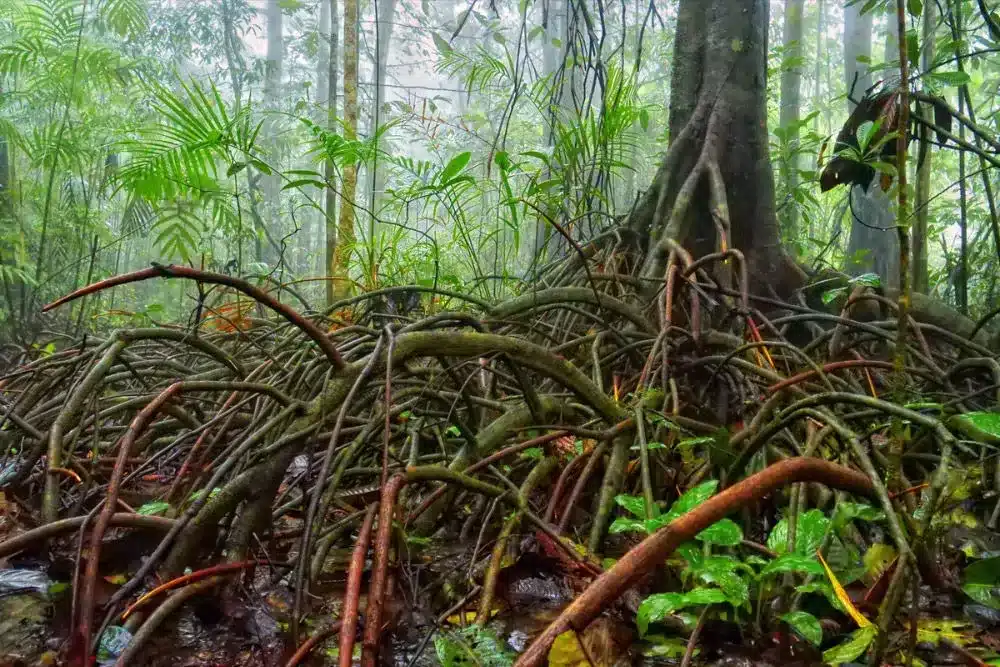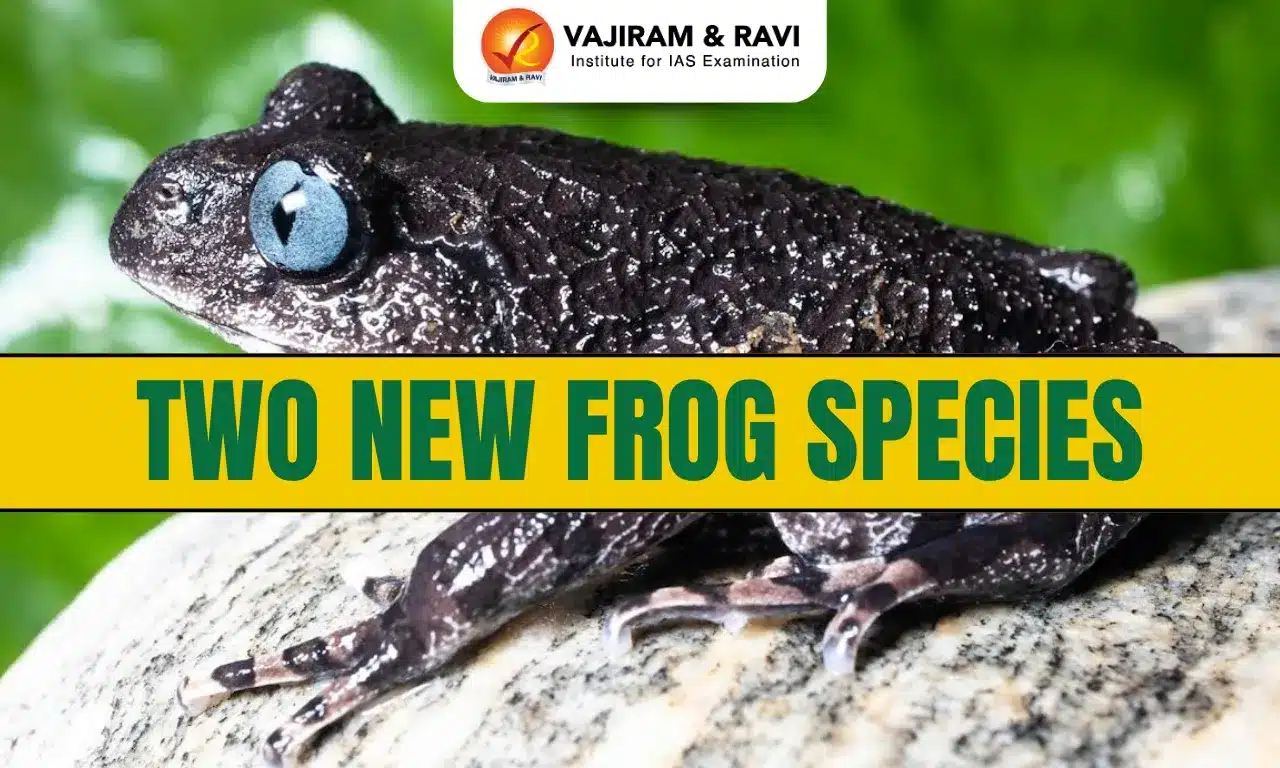About Myristica Swamps:
- These are freshwater swamps dominated by evergreen trees belonging to the Myristica ceae family.
- They are also denoted as living fossils due to the primitive nature of Myristica plants.
- With an evolutionary origin of about 140 million years, the swamps are valuable for evolutionary studies.
- These forests are characterized by trees with large protruding roots jutting out of waterlogged soil, which remains inundated throughout the year.
- Geographical distribution: In India, these unique habitats occur in the Western Ghats, and a smaller distribution exists in the Andaman and Nicobar Islands and Meghalaya.
- Historically, they formed a large hydrological network all along the Western Ghats.
- Climatic conditions: The formation of these swamps is dependent on abiotic conditions like the shape of the valley between the forested hills, the amount of rainfall a place receives (with an average of 3000 mm), and water availability throughout the year.
- Typically, Myristica swamps are seen next to rivers and help in retaining water and act as a sponge, ensuring perennial water availability.
- These forests have higher ability to sequester carbon than non-swampy forests.
- These swamps are home to many vertebrate and invertebrate faunal species. This is due to stable macroecological conditions like high humidity, moderate temperature, and macrohabitat availability.
- One example is the Myristica Swamp Treefrog (Mercurana myristicapalustris), only reported from a few pockets of the Shendurney and Peppara Wildlife Sanctuaries in Kerala.
Q1: What is a swamp?
A swamp is an area of land permanently saturated, or filled, with water. Many swamps are even covered by water. There are two main types of swamps: freshwater swamps and saltwater swamps. Swamps are dominated by trees. They are often named for the type of trees that grow in them, such as cypress swamps or hardwood swamps. Freshwater swamps are commonly found inland, while saltwater swamps are usually found along coastal areas. Swamps are transition areas.
Last updated on January, 2026
→ Check out the latest UPSC Syllabus 2026 here.
→ Join Vajiram & Ravi’s Interview Guidance Programme for expert help to crack your final UPSC stage.
→ UPSC Mains Result 2025 is now out.
→ UPSC Notification 2026 is scheduled to be released on January 14, 2026.
→ UPSC Calendar 2026 has been released.
→ UPSC Prelims 2026 will be conducted on 24th May, 2026 & UPSC Mains 2026 will be conducted on 21st August 2026.
→ The UPSC Selection Process is of 3 stages-Prelims, Mains and Interview.
→ Prepare effectively with Vajiram & Ravi’s UPSC Prelims Test Series 2026 featuring full-length mock tests, detailed solutions, and performance analysis.
→ Enroll in Vajiram & Ravi’s UPSC Mains Test Series 2026 for structured answer writing practice, expert evaluation, and exam-oriented feedback.
→ Join Vajiram & Ravi’s Best UPSC Mentorship Program for personalized guidance, strategy planning, and one-to-one support from experienced mentors.
→ UPSC Result 2024 is released with latest UPSC Marksheet 2024. Check Now!
→ UPSC Toppers List 2024 is released now. Shakti Dubey is UPSC AIR 1 2024 Topper.
→ Also check Best UPSC Coaching in India

















